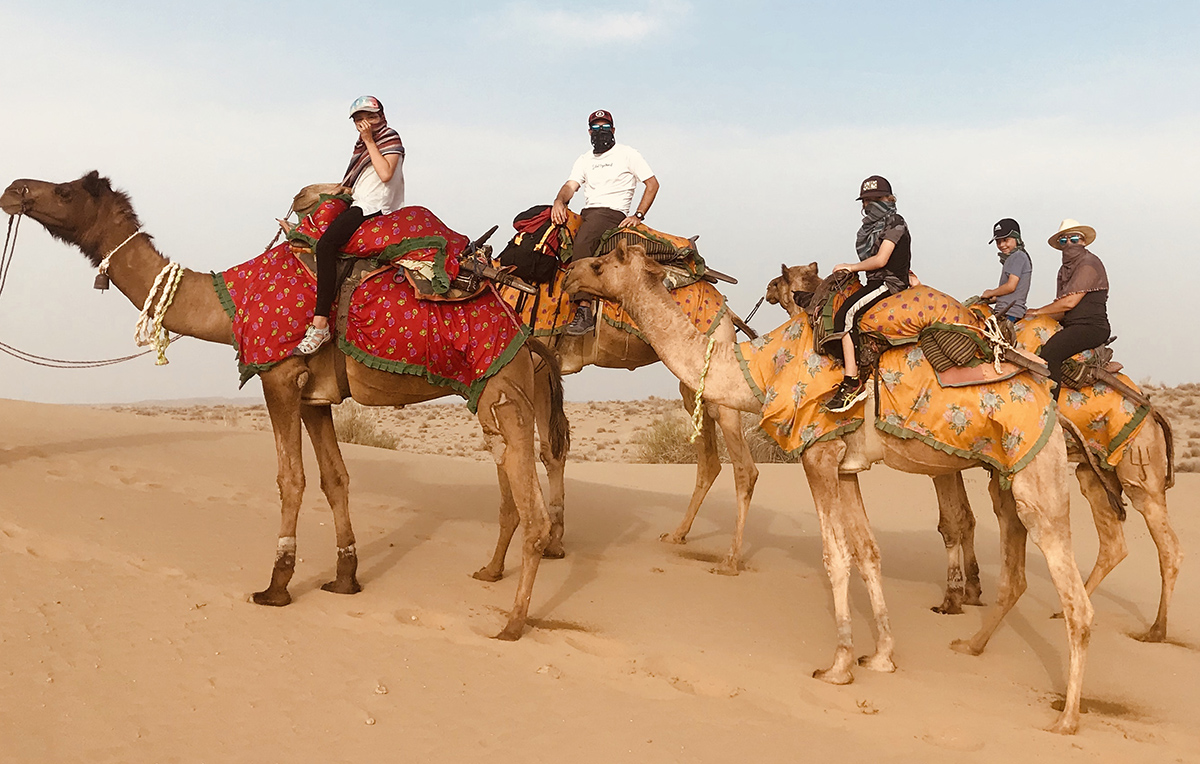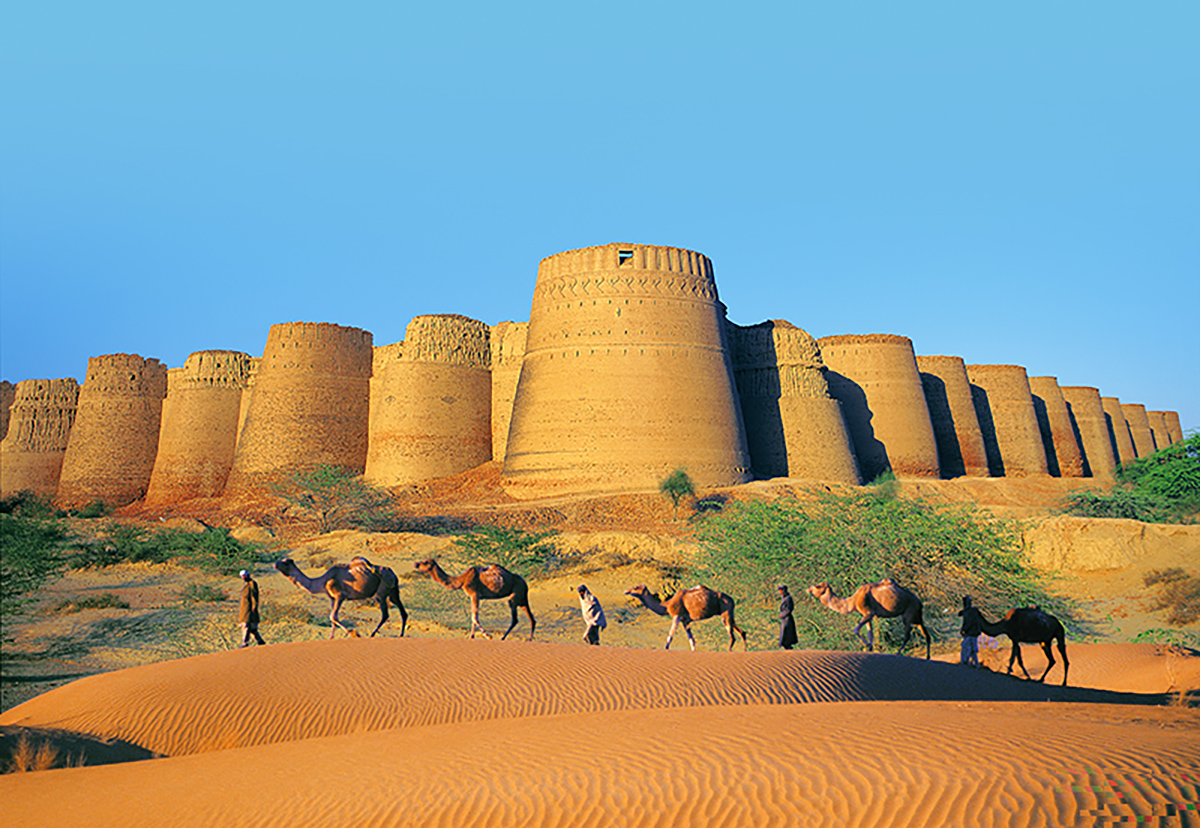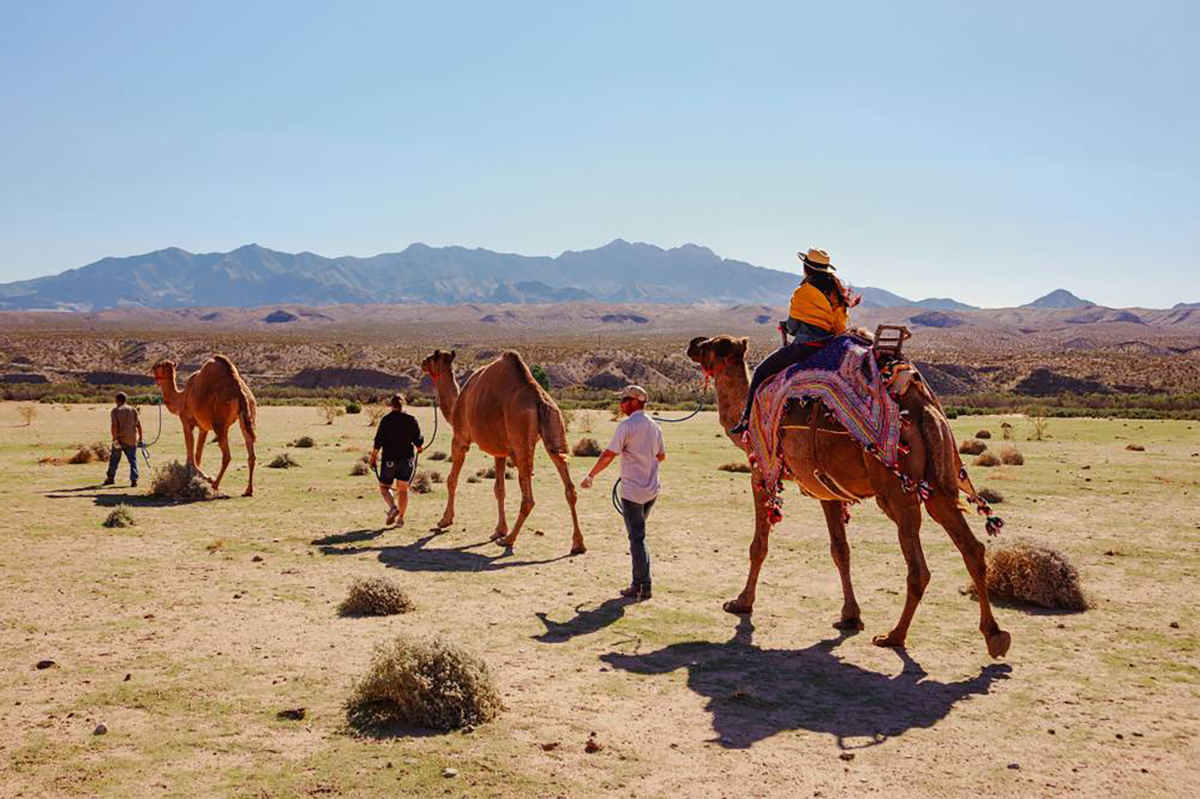


The Cholistan Camel Safari is a mesmerizing 9-day adventure that takes you deep into the enchanting desert landscapes of Cholistan, Pakistan. This safari offers a unique opportunity to immerse yourself in the rich cultural heritage, traditional hospitality, and the awe-inspiring beauty of the desert. The Cholistan Camel Safari offers a unique opportunity to experience the tranquility of the desert, witness breathtaking sunsets over the sand dunes, and embrace the rich culture and traditions of the Cholistan region. Discover the warmth of the locals, the hospitality of desert tribes, and the serene beauty of the desert wilderness. This adventure promises an unforgettable journey through the Cholistan Desert, where you can connect with nature, explore ancient landmarks, and create memories that will last a lifetime.
- Experience a camel ride with local Nomads .
- Lal Suhanra Park one of the largest national parks in South Asia.
- Visit the Old Derawar fort built in the 9th century
- One of the Pakistan’s best desert safaris.
Arrive at Lahore Airport and transfer to hotel. After breakfast proceed for city tour, which includes Lahore fort, Lahore museum, Minar Pakistan, Wazir Khan Mosque, Wagha border, Shalimar Garden and Badshahi mosque.
Accommodation: Hotel
Meals: Breakfast, Lunch, Dinner
Drive to Multan 340 km. arrive Multan transfer to hotel. After refreshment visit Tomb of Shah Rukn-e-Alam, Fort Kohna Qasim Garden, Tomb Shah Shams Sabzwari Tabrez and Fort Kohna Qasim Garden.
Accommodation: Hotel
Meals: Breakfast, Lunch, Dinner
Drive to Bahawalpur arrive and transfer to hotel. After refreshment proceed for city tour, which includes Derawar Fort, Cholistan Desert, noor mahal and Bahawalpur museum.
Accommodation: Hotel
Meals: Breakfast, Lunch, Dinner
Camel rides to Kota Wala Toba.
Accommodation: Camping
Meals: Breakfast, Lunch, Dinner
Camel rides to nearby villages an unforgettable day on camel backs.
Accommodation: Camping
Meals: Breakfast, Lunch, Dinner
Camel to Derawar Fort, later continue by Jeeps to Chanan Pir.
Accommodation: Hotel
Meals: Breakfast, Lunch, Dinner
Drive to Uch Shareef the mystic center of Punjab visit the spectacular tombs of Jewendi Bibi & Hazrat Jalaluddin Surkh.
Accommodation: Hotel
Meals: Breakfast, Lunch, Dinner
Drive to Multan afternoon sightseeing in Multan.
Accommodation: Hotel
Meals: Breakfast, Lunch, Dinner
Transfer to Multan airport for return flight.
- Airport transfer on first and last day in Islamabad
- All domestic road transfers
- All hotel accommodation (twin sharing room)
- All hotel meals (breakfast, lunch and dinner)
- Licensed professional guide
- International airfare and airport taxes.
- Visa fee for Pakistan and personal insurance of the clients.
- Tips for drivers, porters and staff
- Single Supplement
- Transfers to and from airports for participants making individual air arrangements
- Optional excursions or deviations from the scheduled tour
- Miscellaneous (drinks, phone calls, laundry, souvenir etc)
- Room service, gratuities for personal services, items of a purely
- Any other service that is not mentioned in the list above.
